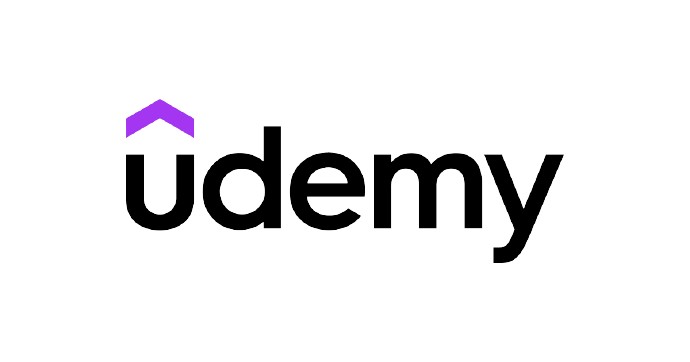ISO Management Systems Documentation Best Practices
Document control is a key aspect of ISO standards. A good document control is required for companies who wish to demonstrate quality, reliability, and other important traits related to their products, services, and processes.
 Click Here to Join the Over 2000 Students Taking our Highly Rated Courses on Quality Assurance/Quality Control, Food Safety, Lean Six Sigma, Lean Manufacturing, Six Sigma, ISO 9001, ISO 14001, ISO 22000, ISO 45001, FSSC 22000, Product Development etc. on UDEMY.
Click Here to Join the Over 2000 Students Taking our Highly Rated Courses on Quality Assurance/Quality Control, Food Safety, Lean Six Sigma, Lean Manufacturing, Six Sigma, ISO 9001, ISO 14001, ISO 22000, ISO 45001, FSSC 22000, Product Development etc. on UDEMY.
What is Document Control?
Document control simply means a series of practices to ensure that documents are developed, reviewed, distributed, retrieved, and discarded in a systematic, traceable and/or verifiable manner.
The concept of document control is most widely known in the context of ISO standards, and especially within ISO 9001 standard.
For instance, clause 7.5.3 (control of documented information) of ISO 9001:2015 standard requires organizations to establish a documented procedure to control several aspects of their documents, including:
- Identification
- Storage
- Protection
- Retrieval
- Retention
- Review
- Approval
- Disposition
- Legibility
- Change tracking
These procedures can assist an organization to maintain stability, and organized as it grows. Good document control practices can assist in maintaining the integrity and traceability of documents, which are aspects that are necessary for effective business operation.
 Click Here to Download Readymade Editable Toolkits & Templates on ISO 9001, ISO 14001, ISO 22000, ISO 45001, FSSC 22000, Integrated Management Systems, Quality Assurance/Quality Control, Lean Six Sigma, Lean Manufacturing, Six Sigma, , HSSE, Project Management etc.
Click Here to Download Readymade Editable Toolkits & Templates on ISO 9001, ISO 14001, ISO 22000, ISO 45001, FSSC 22000, Integrated Management Systems, Quality Assurance/Quality Control, Lean Six Sigma, Lean Manufacturing, Six Sigma, , HSSE, Project Management etc.
Why you Need an Effective Document Control
There are many possible answers to this question, and the following provides some core reasons.
Proper documentation is vital in any organization. Having procedures to manage them improves their quality and integrity, as well as the organization’s productivity and performance.
Organizations need proper documentation on a constant basis in order to efficiently run their processes in order to meet expectations of their customers and stakeholders. An example is documenting formulations, company’s policies, products requirements and others for future reference and use.
The third reason is that, documentation is one of the specific and unavoidable requirements of the standards of International Organisational for Standardisation (ISO). In such cases, document control must be in place in order to meet the requirements of a desired ISO certification.
 Click Here to Download Readymade Editable Toolkits & Templates on ISO 9001, ISO 14001, ISO 22000, ISO 45001, FSSC 22000, Integrated Management Systems, Quality Assurance/Quality Control, Lean Six Sigma, Lean Manufacturing, Six Sigma, , HSSE, Project Management etc.
Click Here to Download Readymade Editable Toolkits & Templates on ISO 9001, ISO 14001, ISO 22000, ISO 45001, FSSC 22000, Integrated Management Systems, Quality Assurance/Quality Control, Lean Six Sigma, Lean Manufacturing, Six Sigma, , HSSE, Project Management etc.
Documentation Best Practices
Maintaining document control requires adhering to the procedures established for that purpose by the organization. A point to note is the importance of traceability and clear access for documentation.
A document should be accessible and traceable, anything short of this leads to procedural failure. The following steps are some initiatives that can facilitate the task of maintaining proper documentation. They are:
- Hiring effective document controllers.
- Establishing clear procedures.
- Training team members to follow the formulated procedures.
- Pick the right software tools for document control.
- Review the results on a periodic basis, and adjust.
 Click Here to Join the Over 2000 Students Taking our Highly Rated Courses on Quality Assurance/Quality Control, Food Safety, Lean Six Sigma, Lean Manufacturing, Six Sigma, ISO 9001, ISO 14001, ISO 22000, ISO 45001, FSSC 22000, Product Development etc. on UDEMY.
Click Here to Join the Over 2000 Students Taking our Highly Rated Courses on Quality Assurance/Quality Control, Food Safety, Lean Six Sigma, Lean Manufacturing, Six Sigma, ISO 9001, ISO 14001, ISO 22000, ISO 45001, FSSC 22000, Product Development etc. on UDEMY.
Automating Documentation
A fast and smart way of maintaining good documentation is automating them. Documentation doesn’t have to be in paper form. The disadvantage with paper-form documents is that, they could become cumbersome overtime and can be lost at any time. This is aside from the safety hazard they pose such as, acting as source of fire outbreak in a facility. To avoid this, automated documentation is strongly recommended.
The following tools, in addition to other very important functions, can help in maintaining good documentation for your processes:
Management Systems Implementation & Auditing Certification Courses on UDEMY, Start Here:
- ISO 50001 Energy Management Systems (EnMS) Lead Auditor Course
- ISO 22000 Food Safety Management Systems (FSMS) Lead Auditor Course
- ISO 14001 Environmental Management Systems (EMS) Lead Auditor Certification Course
- ISO 45001 Occupational Health & Safety Management Systems (OH&MS) Lead Auditor Certification Course
- ISO 9001 Quality Management Systems (QMS) Lead Auditor Course
- Integrated Management Systems (IMS) Implementation Course
- FSSC 22000 Implementation & Internal Auditor Course
- ISO 22000 Implementation & Internal Auditor Course
- ISO 22000 (HACCP, PRPs, oPRPs and CCPs) for Food Safety
- Certified Internal Auditor (CIA) Training Course
- ISO 9001 (QMS) Implementation & Internal Auditor Course
- ISO 14001 (EMS) Implementation & Internal Auditor Course
- ISO 45001 (OH&SMS) Implementation & Internal Auditor Course
- Food Fraud Mitigation & Defense Certification Course
